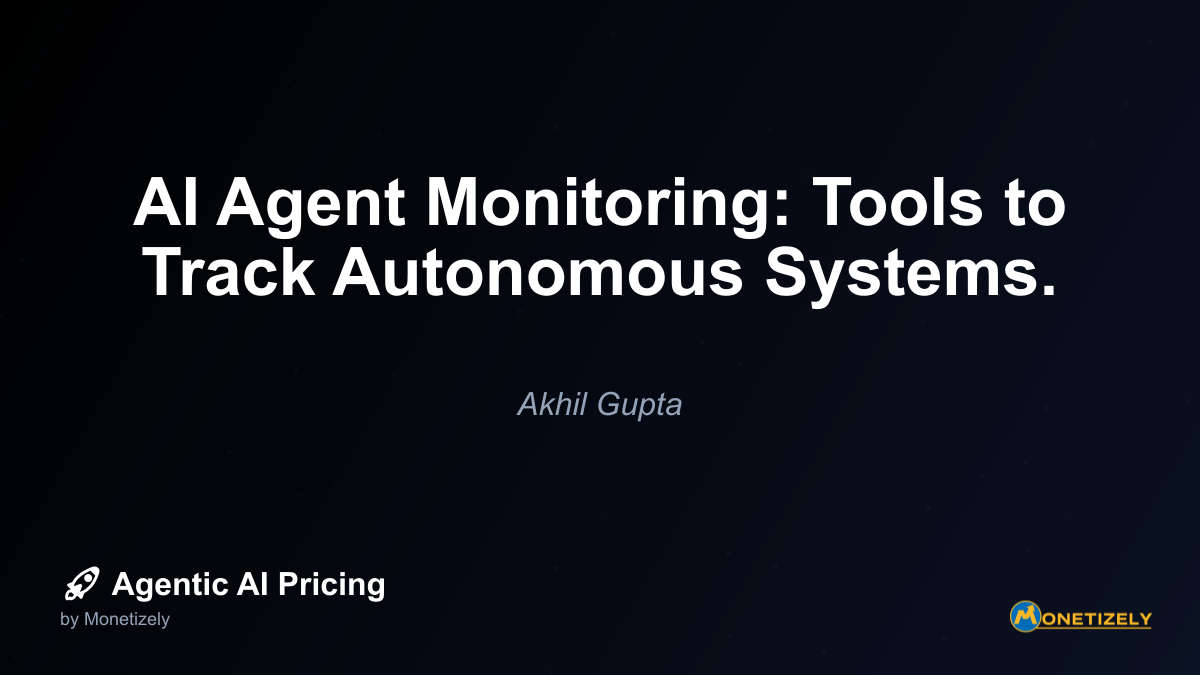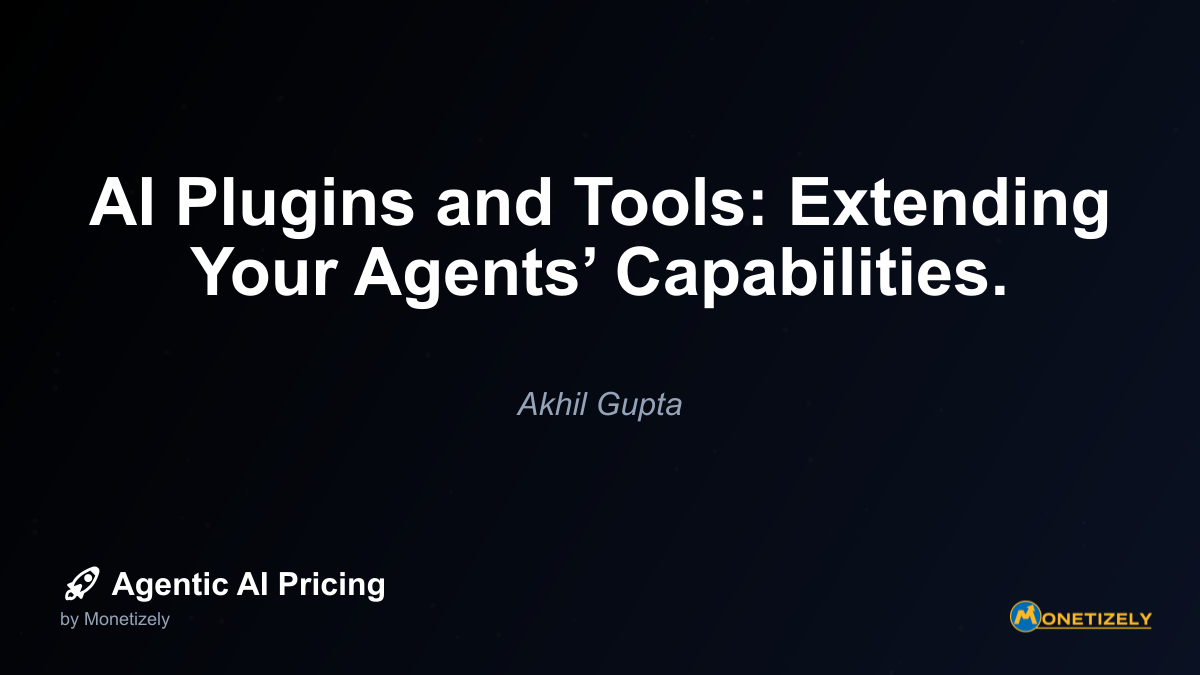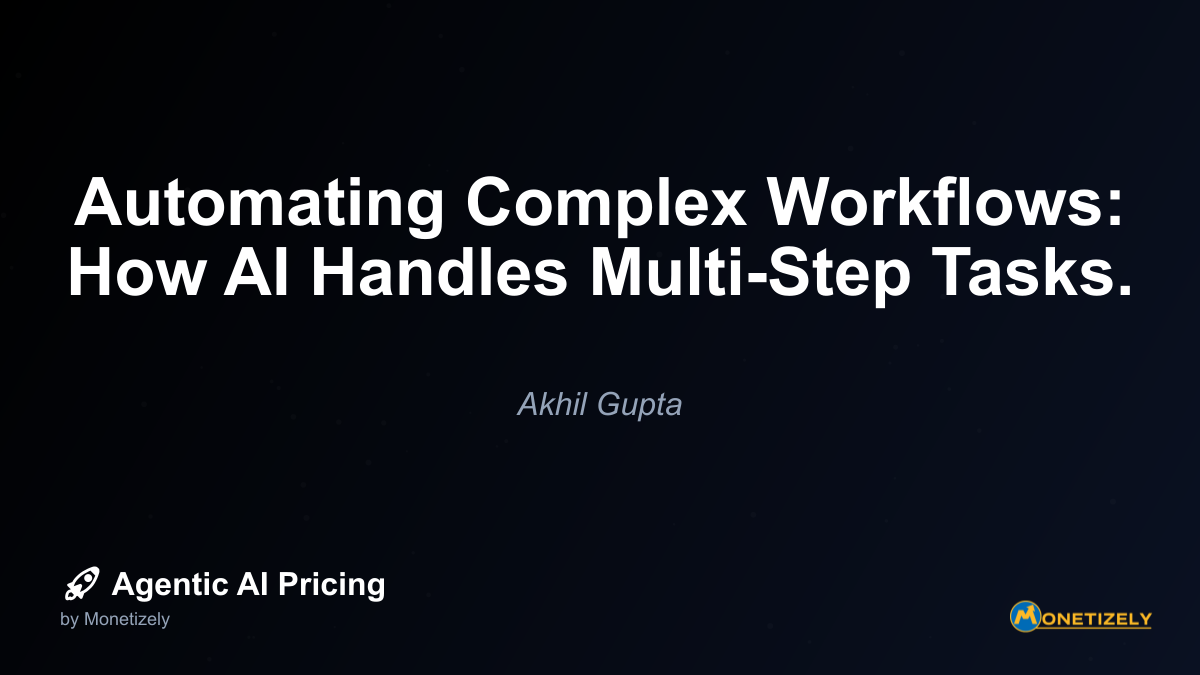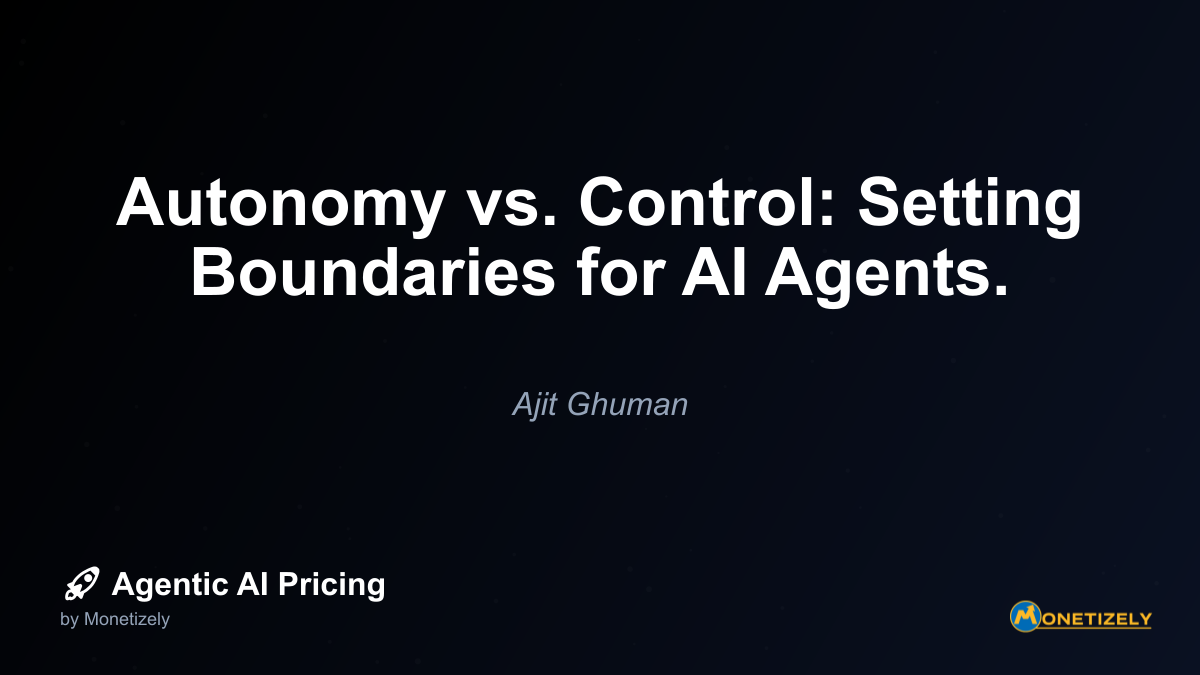· Akhil Gupta · Technical Insights · 8 min read
Handling Edge Cases: Preparing for AI Failures.
AI and SaaS Pricing Masterclass
Learn the art of strategic pricing directly from industry experts. Our comprehensive course provides frameworks and methodologies for optimizing your pricing strategy in the evolving AI landscape. Earn a professional certification that can be imported directly to your LinkedIn profile.
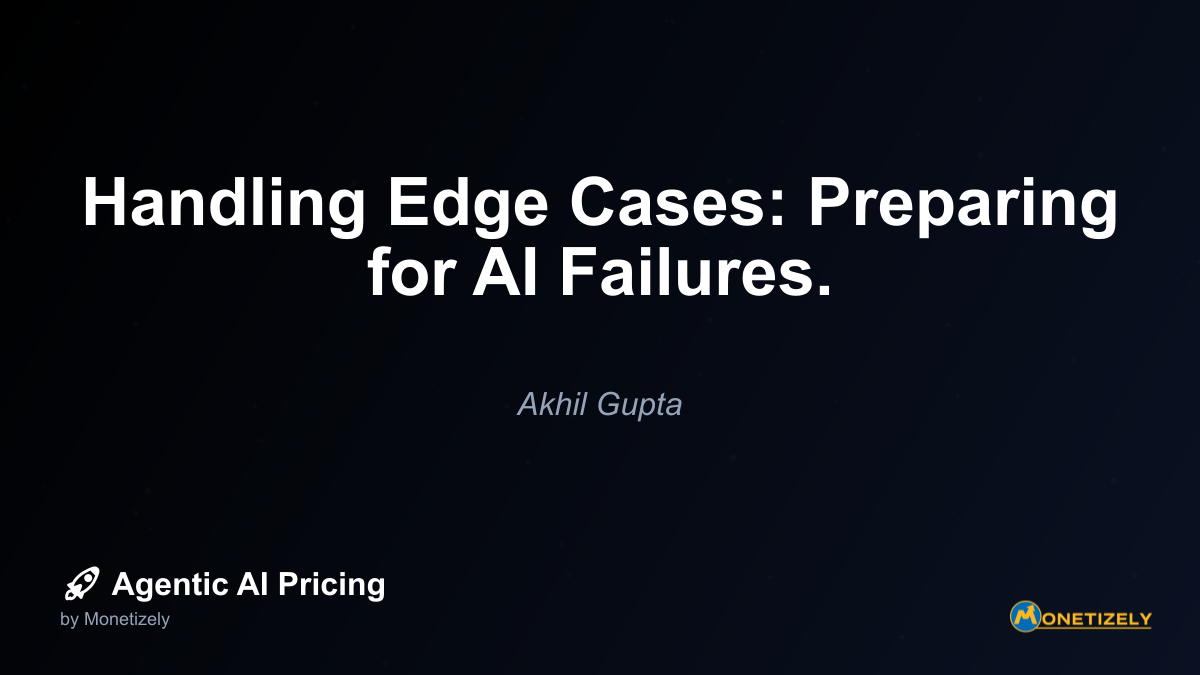
Confidence-Based Decision Making
A critical component of edge case handling is implementing confidence scoring within your AI pricing system. This approach enables the AI to assess its own certainty about pricing decisions:
- Confidence thresholds - Establish minimum confidence levels required for autonomous pricing decisions
- Uncertainty quantification - Implement statistical methods to measure prediction uncertainty
- Confidence-based routing - Automatically route low-confidence decisions to appropriate fallback mechanisms
For example, if your AI pricing system is considering a 15% price increase for a particular customer segment but has only 60% confidence in this decision (below your established 85% threshold), it should automatically route to a more conservative fallback mechanism.
Graceful Degradation Strategies
When edge cases occur, the system should degrade gracefully rather than fail catastrophically:
- Feature reduction - Continue operating with limited functionality rather than complete failure
- Simplified models - Fall back to less sophisticated but more robust pricing models
- Time-limited defaults - Implement temporary pricing rules while the primary system recovers
- Progressive recovery - Gradually restore full functionality as confidence improves
Implementing Transparent User Communication
When AI pricing systems encounter edge cases, transparent communication becomes crucial for maintaining trust with both internal stakeholders and customers.
Internal Stakeholder Communication
For pricing managers, sales teams, and executives:
- Alert systems - Implement real-time notifications when edge cases occur
- Confidence visualization - Display confidence metrics alongside pricing recommendations
- Decision justification - Provide explanations for why fallback mechanisms were activated
- Intervention interfaces - Create intuitive interfaces for human intervention when needed
Customer-Facing Communication
For customers interacting with AI-driven pricing:
- Expectation management - Clearly communicate when normal pricing operations are disrupted
- Transparency without complexity - Explain pricing changes without revealing proprietary details
- Customer-specific messaging - Tailor communications based on how edge cases impact specific customers
- Resolution timelines - When appropriate, provide estimates for when normal pricing operations will resume
Learning from Edge Cases: The Feedback Loop
The most sophisticated AI pricing systems treat edge cases not as failures but as learning opportunities. Implementing robust feedback loops ensures that each edge case contributes to system improvement.
Data Collection and Analysis
Systematically capture data about edge case occurrences:
- Comprehensive logging - Record all system states and inputs when edge cases occur
- Failure categorization - Classify edge cases by type, severity, and impact
- Pattern recognition - Analyze edge case data to identify common triggers or precursors
- Performance metrics - Track how often edge cases occur and how effectively fallbacks perform
Model Refinement Strategy
Use edge case data to continuously improve your AI pricing system:
- Training data augmentation - Incorporate edge case examples into future training data
- Targeted retraining - Focus model updates on areas where edge cases frequently occur
- Feature engineering - Develop new input features that help predict or prevent edge cases
- Architecture evolution - Modify model architecture to better handle identified edge case types
Creating an Edge Case Management Workflow
Effective edge case handling requires not just technical solutions but also organizational processes and responsibilities.
Roles and Responsibilities
Define clear ownership for edge case management:
- Edge case response team - Cross-functional team with authority to make quick decisions
- Technical first responders - Engineers trained to diagnose and address system failures
- Business impact assessors - Stakeholders who evaluate commercial implications of edge cases
- Communication coordinators - Team members responsible for stakeholder and customer messaging
Incident Response Workflow
Establish a clear process for responding to edge cases:
- Detection - Automated monitoring systems identify potential edge cases
- Classification - Incidents are categorized by type, severity, and required response
- Containment - Immediate actions prevent further impact (activating fallbacks)
- Resolution - Technical teams address the root cause
- Recovery - System returns to normal operation
- Analysis - Team conducts post-incident review to extract learnings
- Improvement - Findings are incorporated into system enhancements
Testing and Simulation for Edge Case Preparedness
Proactive testing is essential for edge case readiness in AI pricing systems. Rather than waiting for failures in production, implement rigorous testing approaches.
Adversarial Testing
Challenge your AI pricing system with deliberately difficult inputs:
- Boundary testing - Test the system at the extremes of its expected input ranges
- Noise injection - Introduce random variations in input data to test robustness
- Historical anomaly replay - Reintroduce known historical pricing anomalies
- Competitor simulation - Test how the system responds to simulated competitor actions
Chaos Engineering for Pricing Systems
Adapt chaos engineering principles to test AI pricing resilience:
- Dependency failures - Simulate failures in systems your AI pricing depends on
- Data quality degradation - Test performance with incomplete or corrupted data
- Computational resource constraints - Limit processing power to test performance under stress
- Network partition tests - Simulate communication failures between system components
Continuous Simulation
Maintain ongoing simulation environments to test edge case handling:
- Digital twins - Create simulated environments that mirror production systems
- Scenario playbooks - Develop and regularly run challenging pricing scenarios
- A/B testing for fallbacks - Compare different fallback mechanisms to optimize performance
- Recovery time testing - Measure how quickly systems recover from induced failures
Regulatory and Ethical Considerations
Edge case management in AI pricing must also address regulatory compliance and ethical considerations.
Compliance Requirements
Ensure your edge case handling meets relevant regulations:
- Price transparency laws - Maintain compliance even when fallbacks are activated
- Anti-discrimination requirements - Verify that fallback mechanisms don’t introduce bias
- Audit trails - Maintain comprehensive records of all pricing decisions, including edge cases
- Notification requirements - Understand when regulatory bodies must be informed of pricing anomalies
Ethical Pricing Principles
Establish ethical guidelines for edge case handling:
- Fairness preservation - Ensure fallback mechanisms maintain pricing fairness
- Vulnerability protection - Implement special protections for vulnerable customer segments
- Proportional response - Match the severity of intervention to the severity of the edge case
- Transparency balance - Find the right balance between transparency and business protection
Case Study: Edge Case Management in Action
To illustrate effective edge case management, consider this hypothetical case study of a SaaS company implementing an AI-driven pricing system.
Company Background
TechSolutions, a B2B SaaS provider, implemented an AI pricing system to optimize subscription fees across their diverse customer base. The system analyzed usage patterns, competitive positioning, customer characteristics, and market conditions to recommend optimal pricing for renewals and new contracts.
The Edge Case
During a major cloud infrastructure outage affecting several regions, the AI pricing system encountered unprecedented conditions. Customer usage metrics became highly irregular, competitive data feeds failed, and several internal data pipelines were disrupted. The system began generating pricing recommendations that were significantly out of normal ranges—in some cases suggesting 300% increases for renewal contracts.
The Response
TechSolutions’ edge case management system performed as designed:
- Detection - The confidence scoring system flagged that pricing recommendations were being generated with only 30% confidence (well below the 75% threshold)
- Fallback activation - The system automatically switched to its rule-based secondary pricing engine
- Notification - Pricing managers and sales leaders received immediate alerts about the situation
- Containment - All automated pricing communications were temporarily suspended
- Communication - Sales representatives received talking points explaining the temporary pricing approach
- Resolution - As infrastructure recovered, the system gradually returned to its primary AI engine
- Learning - The incident data was used to enhance the AI model’s ability to handle similar scenarios
The Outcome
Because of their robust edge case management, TechSolutions avoided sending erroneous pricing to customers. The company later estimated that without these safeguards, the incident could have affected approximately $2.3 million in contract value and potentially damaged relationships with 140 key accounts.
Implementing Edge Case Management: A Practical Roadmap
For organizations looking to enhance their AI pricing systems with robust edge case management, consider this phased implementation approach:
Phase 1: Assessment and Planning (1-2 months)
- Inventory existing pricing systems and identify potential edge cases
- Document current fallback mechanisms (if any)
- Establish edge case severity classifications
- Define confidence thresholds for various pricing decisions
- Create an edge case response team and define roles
Phase 2: Basic Safeguards (2-3 months)
- Implement simple rule-based fallbacks for critical pricing functions
- Develop basic monitoring and alerting for anomalous pricing outputs
- Create standard operating procedures for manual intervention
- Establish communication templates for internal stakeholders
- Begin logging edge case occurrences for future analysis
Phase 3: Advanced Implementation (3-6 months)
- Develop confidence scoring mechanisms for AI pricing decisions
- Implement tiered fallback architecture with multiple safety layers
- Create simulation environments for edge case testing
- Develop customer-facing communication protocols
- Establish comprehensive logging and analysis workflows
Phase 4: Continuous Improvement (Ongoing)
- Regularly analyze edge case data to identify patterns and improvement opportunities
- Conduct periodic simulations and adversarial testing
- Refine AI models based on edge case learnings
- Optimize fallback mechanisms based on performance data
- Update response protocols based on stakeholder feedback
Conclusion: From Vulnerability to Resilience
Edge cases in AI pricing systems are inevitable. The question isn’t whether your system will encounter unexpected scenarios, but how effectively it will respond when they occur. By implementing robust edge case management strategies—including fallback mechanisms, confidence-based decision making, transparent communication, and continuous learning—you transform potential vulnerabilities into opportunities for system resilience.
Organizations that excel at edge case management gain significant advantages:
- Enhanced reliability - Systems continue functioning even under unusual conditions
- Preserved trust - Stakeholders maintain confidence in AI pricing recommendations
- Competitive advantage - Pricing operations remain stable while competitors may falter
- Accelerated learning - Each edge case contributes to system improvement
- Reduced risk - Potential financial and reputational damage is minimized
As AI pricing systems become increasingly sophisticated, paradoxically, the ability to handle the simplest fallback scenarios becomes more critical. The organizations that will succeed in the AI-driven pricing landscape won’t necessarily be those with the most advanced algorithms, but those that have thoughtfully prepared for the moments when those algorithms reach their limits.
By building comprehensive edge case management into your AI pricing strategy from the beginning, you create systems that don’t just perform well under ideal conditions, but remain reliable, trustworthy, and effective even when facing the unexpected challenges that define our complex business environment.
Co-Founder & COO
Akhil is an Engineering leader with over 16+ years of experience in building, managing and scaling web-scale, high throughput enterprise applications and teams. He has worked with and led technology teams at FabAlley, BuildSupply and Healthians. He is a graduate from Delhi College of Engineering and UC Berkeley certified CTO.
Pricing Strategy Audit
Let our experts analyze your current pricing strategy and identify opportunities for improvement. Our data-driven assessment will help you unlock untapped revenue potential and optimize your AI pricing approach.

